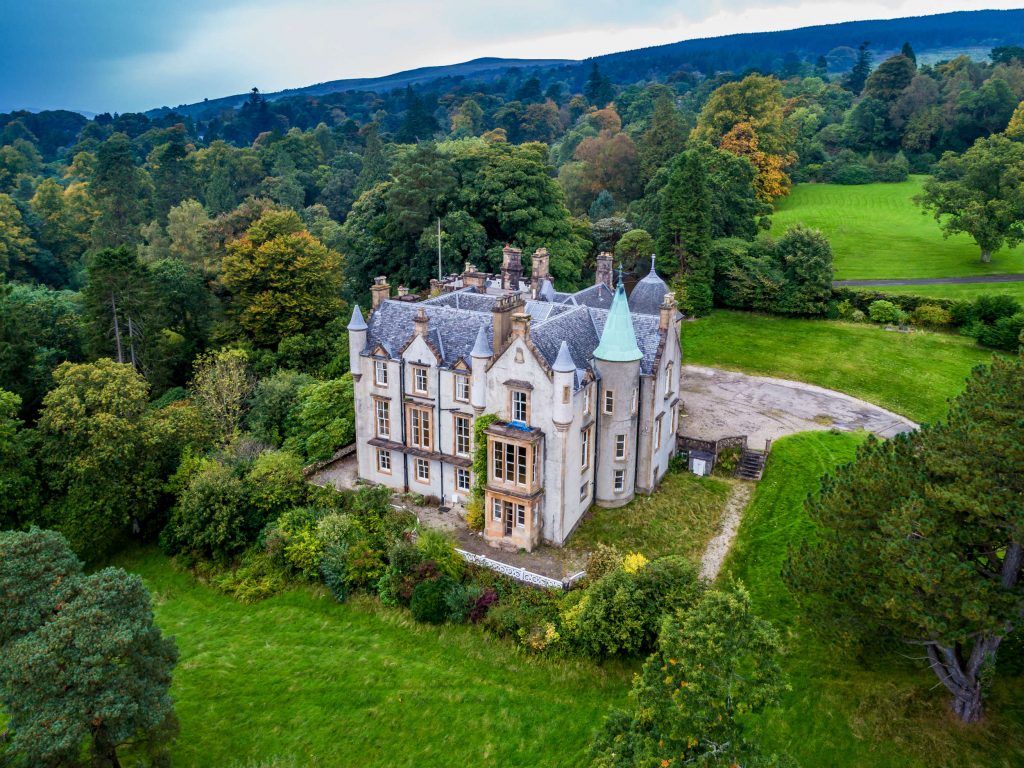A STUNNING baronial home at the centre of a murder mystery that gripped the country over 150 years ago has been put up for sale for a bargain £350,000.
Invergare Mansion was home in the mid-19th Century to Madeleine Smith who went on trial for murder following the death of her secret lover after he drank cocoa laced with arsenic.
It was in the nine-bedroom property in Rhu, Argyll and Bute, that young Madeleine was alleged to have given the deadly drink to middle-aged clerk Pierre Emile L’Angelier.

The case, which scandalised Victorian society, resulted in Scotland’s first ever not proven verdict and Madeleine fled to America, where she married three times and died aged 92.
The mansion, designed by Madeleine’s father, James, is now in need of “significant” renovation but includes over 2.5 acres of land, numerous period features including marble flooring, and stunning views over the Firth of Clyde.
Perhaps unusually, the sellers, Rettie, are making much of the dark history of the property.
Buyers are told in the sales brochure: “James Smith left the house in 1858 following a scandal surrounding his daughter, Madeleine Smith, who was accused of murder.”
Madeleine – described by a contemporary as “strikingly attractive, stylish, and confident with dark hair and the most entrancing eyes” – began her affair with Pierre in 1855 when they were introduced by a neighbour.
B-listed Invergare was frequently the venue for their passionate affair but the gulf in their social status meant Madeline became engaged to another man.
L’Angelier then threatened to expose their letters unless she married him. At a meeting between the couple at the house in 1857 Madeleine is alleged to have put 30 “grains” of arsenic in her former beau’s cocoa.
L’Angelier died shortly afterwards and a post-mortem revealed the presence of arsenic, resulting in Madeleine’s arrest and trial at the High Court in Edinburgh.
Madeline was arrested and went on trial for his murder at the High Court in Edinburgh. The prosecution case rested on Madeleine’s motive but her defence team insisted she had not seen Pierre for three weeks before his death.
Reluctant to send a woman to the gallows without more evidence, the jury returned a not proven verdict, meaning Madeleine was acquitted but left under a shadow of doubt for the rest of her life.
Following the trial, the young socialite reportedly disguised herself and caught the night train to London before fleeing to America, where she died in 1938.
While Rettie acknowledge the tragic history of the property, they prefer to concentrate on its many attractions.
“Despite having been vacant for a number of years, the Victorian home still boasts some impressive features,” states the brochure.
“Externally the house is faced with grey harling with honey coloured sandstone dressings and margins, chamfered reveals, quoin strips and crow-stepped gables.”
They add: “Internally Invergare has a wealth of period features to marry the exceptional external architectural character displayed in the principal elevations.
“Examples of the period features include the octagonal entrance porch with its marble floor and skirting, polished sandstone arches and the barrel vaulted corridor that leads from the entrance porch to the entrance hall with its galleried landing over and columned classical arches.”